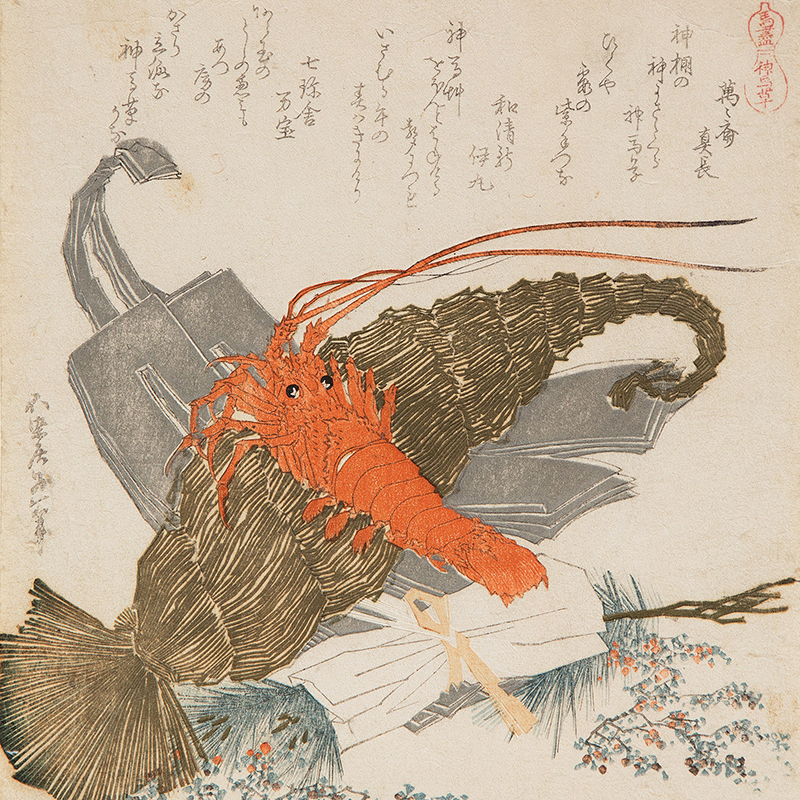Katsushika Hokusai
1760 - 1849
1820
Shikishiban surimono, 208 x 184 mm
Signed: Hokusai aratame Iitsu hitsu
Series: Five Immortal Poets
Gokasen
The title of this print Hiōgi is the name of a Japanese cypress folding fan, which is at the feet of the Lady.
Fine impression, with extensive metallic printing; fine colour and condition.
The Five Immortal Poets were five of the seven maids of honour to the Empress Jōtō Mon’in (988-1074), namely Murasaki Shikibu, Izumi Shikibu, Akazome Emon, Uma no Naishi and Ise no Taifu. Hokusai has drawn each of them in an elaborate court gown.Here are the poems:
I counted the days on the turning wheels of the book cart, tired of waiting for the voice of the spring warbler Sembatei Teodori
The joy of opening the letter box with the plum branch, of untying the cord, spreading everything out and flattening the creases Ashinoya Yūzuru
On the eastern window of the dwelling where we awaited Spring, the crane spreads its wings and casts a shadow Shun’itei Sodenari
Another impression of this surimono is preserved in the Chester Beatty Library, Dublin; see Roger Keyes The Art of Surimono: Privately published Japanese woodblock prints and books in the Chester Beatty Library, Dublin; London, 1985, vol. I, page 230.
Another one is preserved at the Library of Congress, Washington (item 2009615077).
Information on the master
Katsushika Hokusai, dominated the scene of the art of the Japanese print (Ukiyo-e) in the field of book illustration, drawing and painting. He was born in the Honjo district of Edo. His passion for art began at an early age; he was adopted by an illustrious family of artisans who introduced him to wood engraving. This influenced his career and at the age of 18 he entered at the studio of Katsukawa Shunso (1726-1793), who specialised in prints depicting the popular Kabuki theatre. Under the pseudonym of Shunro, around the 1780s, he got to know artists like Shigemasa (1739-1820) and Kiyonaga (1752-1815) who influenced his drawing of figures. Around 1790 he produced his first important prints which he signed Kako. He also produced fine Surimono. In 1797 he married and took the name Hokusai, becoming one of the foremost illustrators and artists of Japan. Among his most famous work are the ehon, books of images, as the 15 albums of drawings entitled Manga. The most celebrated of his prints series is The thirty-six views of Mount Fuji, early thirties. Amongst his many pupils: Shinsai, Hokuju, Hokuba, Hokkei, Shigenobu.
Other works of the master









